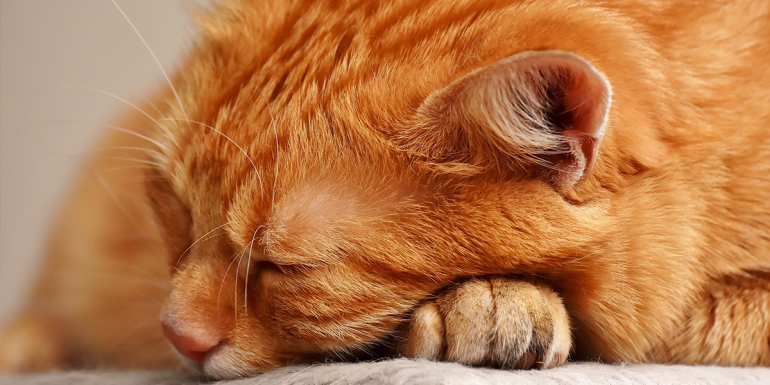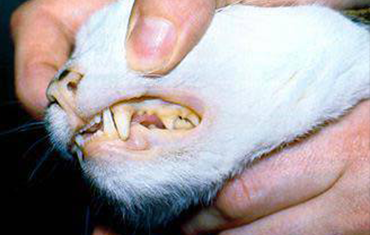Cat's Anemia Causes, Symptoms, and Treatment

Cats Anemia
Anaemia is not a disease but it is a sign that there may be something seriously wrong in the body. There are many different causes of anaemia in cats and in most cases your vet will need to perform a variety of tests to work out what is wrong. Severe anaemia can be life-threatening and requires urgent treatment.

What are red blood cells?
Essential cells that transport oxygen throughout the body are red blood cells. The bone marrow, as well as the liver and spleen, is where red blood cells are mostly produced. They are red because of a pigment known as hemoglobin. While passing through the lungs, red blood cells absorb oxygen, which they then transfer to the body's tissues where it is exchanged for the waste gas carbon dioxide. The carbon dioxide is carried by the red blood cells back to the lungs, where it is expelled from the body by breathing.
After around 70 days of activity, red blood cells are eliminated from the body. The bone marrow's constant production makes sure that the overall count doesn't change.
How do I know if my cat is anaemic?
There might not be many anemia symptoms in the early stages. Since the body has time to adjust to the lower oxygen levels, if the anemia develops slowly, it can become extremely severe without the animal exhibiting any symptoms. Low energy and overall weakness as a result of the muscles' decreased ability to get oxygen may be the initial symptoms of anemia. Animals who are anemic often have poor appetites. You might notice that your cat's gums are pale or even white if you lift its lips, but normal cats typically have rather pale gums, so don't be frightened if you inspect your cat.
Symptoms of Feline Anemia
-
Pale Gums and Mucous Membranes: Healthy gums in cats are pink; pale or white gums can indicate anemia.
-
Lethargy and Weakness: Anemic cats often display decreased energy levels and appear weak or lethargic.
-
Loss of Appetite: Cats with anemia might lose interest in food and experience weight loss.
-
Jaundice: Yellowing of the skin, gums, or whites of the eyes can occur due to the breakdown of red blood cells.
-
Increased Heart Rate and Respiratory Rate: Anemic cats may breathe rapidly and have an elevated heart rate as their body tries to compensate for the decreased oxygen-carrying capacity of the blood.

How will my vet know if my cat has anaemia?
To diagnose anemia in your cat, your veterinarian will need to perform a thorough examination. Jaundice, or the yellowing of the skin and mucous membranes around the eyes, nose, and mouth, may also occur, depending on the cause of the anemia. Most of the time, a single blood test can be used to diagnose anemia; however, your veterinarian may need to run many tests in order to determine the cause of the anemia. To treat the underlying ailment, it is critical to determine the reason of anemia.
Common tests that may be required include:
- Blood tests these allow your vet to tell how severe the anaemia is, and also in some cases indicate what has caused it. A large number and variety of tests may be required; tests are often repeated frequently to assess progress and response to treatment.
- X-rays and ultrasound scans these may be used to look for internal problems causing the anaemia, eg blood loss into the abdomen or chest, or perhaps cancers.
- Biopsies samples may be taken from any lumps, and of the bone marrow, to assess its function and to look for abnormalities.
Why is my cat anaemic?
There are several ways that anemia might arise.
Bleeding
The most evident reason is hemorrhage, such as following an injury. The goal of first aid in accidents and emergency circumstances is to minimize blood loss. In kittens, high flea infestations can also result in possibly deadly anemia.
A protracted period of time during which minute amounts of blood are drained from the body can also cause hemorrhage, but considerably more slowly. This kind of bleeding is frequently linked to internal bleeding from malignancies. Blood loss may go unnoticed until symptoms of anemia appear if it happens gradually, especially if it is leaking into the urine or feces. Because the body has time to adjust to the lower oxygen levels in these situations, the anemia may be fairly severe before symptoms appear.
There are numerous additional reasons why cats get anemia on a regular basis. When an animal becomes anemic, normal animals produce more red blood cells. Anaemia, however, can occur if there is an issue with the generation of red blood cells or if they are being destroyed in greater quantities than usual.
A parasite that resides in or on red blood cells can infect cats and cause anemia (feline infectious anemia caused by Haemoplasma infection, eg Mycoplasma haemofelis). Red blood cells are harmed by the body's defenses when they identify the parasite and attempt to eliminate it, causing the blood to become thinner. Anaemia eventually sets in if the bone marrow is unable to generate red blood cells at the same rate that they are being destroyed. This is because old cells are not replaced. Cats with chronic conditions, especially kidney failure, are also frequently anemic.
Determining the precise cause of the anemia and the body's reaction is one of the issues facing the veterinary surgeon. It is critical to look at all forms of anemia in order to determine the best course of action.
Causes of Feline Anemia
-
Blood Loss: External injury, internal bleeding, or parasitic infestations such as fleas and ticks can lead to significant blood loss, causing anemia in cats.
-
Chronic Disease: Certain chronic illnesses, including kidney disease, feline leukemia, and autoimmune disorders, can impact the production and lifespan of red blood cells.
-
Nutritional Deficiencies: Inadequate nutrition, especially a lack of essential vitamins and minerals like iron, can lead to anemia in cats.
-
Bone Marrow Disorders: Disorders affecting the bone marrow, where red blood cells are produced, can result in decreased red blood cell production.
-
Toxicity: Ingestion of certain toxins, such as poisonous plants or medications, can damage the bone marrow and cause anemia.
Can my cat be treated for anaemia?
Determining the root cause of the issue is necessary for an effective treatment plan. Depending on the cause, surgical or medicinal solutions can be possible. Drugs that change the immune system's actions can be administered if the body's immune system is destroying red blood cells. Anaemia can be caused by some blood parasites, which can be treated with the right treatment. For example, antibiotics can be used to treat hemoplasma infections. Long-term management of kidney illness is possible, although controlling the anemia it generates can be challenging.
Diagnosis and Treatment
If you suspect your cat is anemic, it is crucial to seek veterinary care promptly. The vet will conduct a thorough physical examination and might recommend blood tests, including a complete blood count (CBC) and tests for underlying diseases.
Treatment options for feline anemia depend on the underlying cause and severity of the condition. Common treatments include:
-
Blood Transfusions: In severe cases, a blood transfusion might be necessary to restore the cat's red blood cell count and improve oxygen delivery to the body tissues.
-
Addressing Underlying Causes: Treatment of underlying conditions, such as parasite control, managing chronic diseases, or providing proper nutrition, can help resolve anemia in some cases.
-
Supplementation: Iron supplements and a balanced diet rich in essential nutrients may be prescribed to address nutritional deficiencies.
-
Medications: Medications to stimulate red blood cell production or to suppress the immune system in the case of autoimmune-related anemia might be prescribed.
-
Hospitalization: Severely anemic cats might need hospitalization and intravenous fluid therapy to stabilize their condition.
Conclusion
Anemia in cats is a serious condition that requires prompt attention and proper veterinary care. Understanding the causes, recognizing the symptoms, and seeking timely treatment can significantly improve the prognosis for anemic cats. As a responsible pet owner, being aware of your cat's health, providing a balanced diet, and scheduling regular vet check-ups are essential steps in ensuring your feline friend lives a happy and healthy life.



